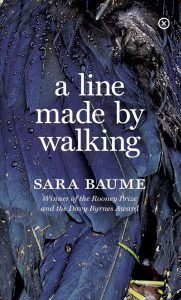
Sara Baume’s second novel has been much-feted for its brave lack of plot by literary types (as though an inability to tell a story is somehow a virtue) so I was surprised – and pleased – to find that although sections of the narrative veer towards nature-writing, this is, yes (gasp!) – an actual novel. With a plot and everything.
25-year-old Frankie is an art graduate already broken by the failure of the world to live up to what she imagined, and by her own failure to live up to her expectations. What is she, now that she is only tangentially – she has just finished an internship at an art gallery – linked to the world of art? What is she if she is not making things?
Retreating from the world, she takes over her dead grandmother’s bungalow, and in the middle of nowhere she sets herself a project: to photograph the dead animals around her. To mark them. To say something, perhaps, about the impermanence of things. Or the permanence of it, the ongoing loss and sadness that is so much a part of life. There is nothing cutesy or forced about this project, represented in the text by black-and-white photographs (the author’s own) at the beginning of every chapter.
Frankie is sad. She is lost. And although she resists doctors’ suggestions that this depression is chemical rather than social, or might be alleviated by chemicals at any rate, this feels very much like a depiction of mental illness. It reminded me of Susanna Kaysen’s Girl, Interrupted, which raises similar questions about whether ‘madness’ is simply not fitting into what the world expects (particularly of women) or a genuine illness.
There are no easy answers in this novel, which ends on both a melancholy and hopeful note. It feels like a stupidly obvious thing to note about Baume’s writing, but it’s utterly gorgeous. Her attention to detail – whether about the physical world or the inner thoughts of her protagonist – is superb. This is a sad, beautiful book.
Published on May 04, 2017 23:04
 newest »
newest »
 newest »
newest »
 Picking my copy up today: Can't wait.
Picking my copy up today: Can't wait.





